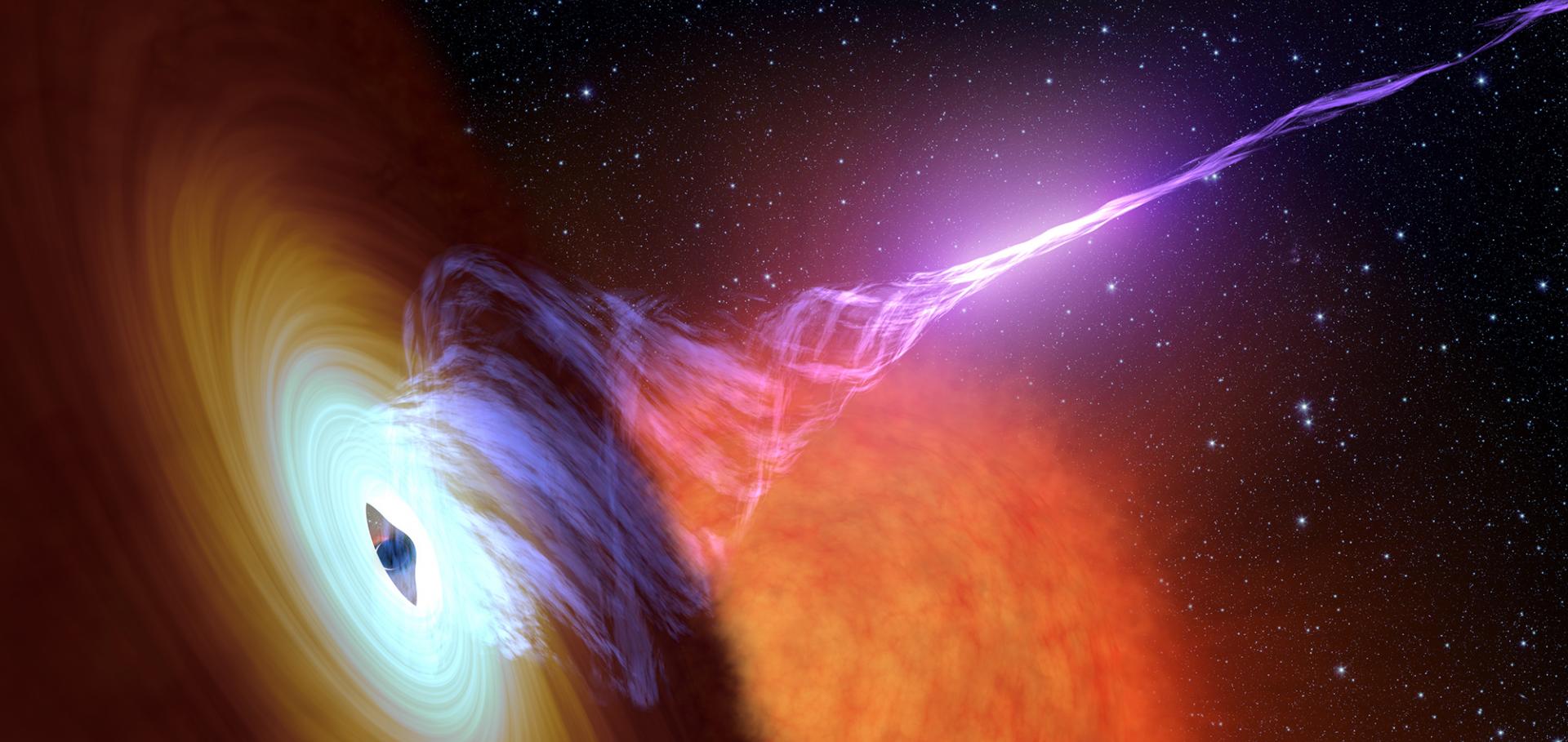The Accretion-Ejection Connection in the Black Hole X-ray Binary MAXI J1820$+$070
(2025)
The accretion–ejection connection in the black hole X-ray binary MAXI J1820+070
Monthly Notices of the Royal Astronomical Society Oxford University Press 541:2 (2025) 1851-1865
Abstract:
The black hole X-ray binary MAXI J1820070 began its first recorded outburst in March 2018, and remained an active radio, X-ray, and optical source for over 4 yr. Due to the low distance to the source and its intrinsically high luminosity MAXI J1820070 was observed extensively over this time period, resulting in high-cadence and quasi-simultaneous observations across the electromagnetic spectrum. These data sets provide the opportunity to probe the connection between accretion and the launch of jets in greater detail than for the majority of black hole X-ray binaries. In this work, we present radio (Arcminute Microkelvin Imager Large Array, MeerKAT), X-ray (Swift), and optical (Las Cumbres Observatory) observations of MAXI J1820070 throughout its entire outburst, including its initial hard state, subsequent soft state, and further hard-state-only re-brightenings (covering March 2018 to August 2022). Due to the regularity and temporal density of our observational data we are able to create a Radio–X-ray–Optical activity plane where we find a high degree of correlation between the three wave bands during the hard states, and observe hysteresis as MAXI J1820070 enters and exits the soft state. Based on the morphology of the optical light curves we see evidence for optical jet contributions during the soft-to-hard state transition, as well as fading optical emission well before the hard to soft transition. We establish that the remarkably similar profiles of the re-brightening events are broadly consistent with modified disc instability models where irradiation from the inner accretion disc is included.Joint Radiative and Kinematic Modelling of X-ray Binary Ejecta: Energy Estimate and Reverse Shock Detection
Monthly Notices of the Royal Astronomical Society Oxford University Press (OUP) (2025) staf1085
Abstract:
Abstract Black hole X-ray binaries in outburst launch discrete, large-scale jet ejections which can propagate to parsec scales. The kinematics of these ejecta appear to be well described by relativistic blast wave models original devised for gamma-ray burst afterglows. In previous kinematic-only modelling, a crucial degeneracy prevented the initial ejecta energy and the interstellar medium density from being accurately determined. In this work, we present the first joint Bayesian modelling of the radiation and kinematics of a large-scale jet ejection from the X-ray binary MAXI J1535-571. We demonstrate that a reverse shock powers the bright, early ejecta emission. The joint model breaks the energetic degeneracy, and we find the ejecta has an initial energy of E0 ∼ 3 × 1043 erg, and propagates into a low density interstellar medium of nism ∼ 4 × 10−5 cm−3. The ejecta is consistent with being launched perpendicular to the disc and could be powered by an efficient conversion of available accretion power alone. This work lays the foundation for future parameter estimation studies using all available data of X-ray binary jet ejecta.The Double Tidal Disruption Event AT 2022dbl Implies that at Least Some “Standard” Optical Tidal Disruption Events Are Partial Disruptions
The Astrophysical Journal Letters American Astronomical Society 987:1 (2025) L20
Abstract:
Flares produced following the tidal disruption of stars by supermassive black holes can reveal the properties of the otherwise dormant majority of black holes and the physics of accretion. In the past decade, a class of optical-ultraviolet tidal disruption flares has been discovered whose emission properties do not match theoretical predictions. This has led to extensive efforts to model the dynamics and emission mechanisms of optical-ultraviolet tidal disruptions in order to establish them as probes of supermassive black holes. Here we present the optical-ultraviolet tidal disruption event AT 2022dbl, which showed a nearly identical repetition 700 days after the first flare. Ruling out gravitational lensing and two chance unrelated disruptions, we conclude that at least the first flare represents the partial disruption of a star, possibly captured through the Hills mechanism. Since both flares are typical of the optical-ultraviolet class of tidal disruptions in terms of their radiated energy, temperature, luminosity, and spectral features, it follows that either the entire class are partial rather than full stellar disruptions, contrary to the prevalent assumption, or some members of the class are partial disruptions, having nearly the same observational characteristics as full disruptions. Whichever option is true, these findings could require revised models for the emission mechanisms of optical-ultraviolet tidal disruption flares and a reassessment of their expected rates.Thermal electrons in the radio afterglow of relativistic tidal disruption event ZTF22aaajecp/AT2022cmc
(2025)


